Optimal Machine Cell Automation
A leading manufacturer of emergency warning lights explores its options in designing an automated machining cell, finding the perfect solution for its application in an enclosed multi-pallet loader newly available on the U.S. market.
Share




For a machine shop, designing an automated cell from the ground up can be a daunting prospect. Choose the wrong equipment, and not only will you be hobbled from the start trying to integrate mismatched components, you will waste time constantly making adjustments for the duration of the cell’s life. Make the right decisions, however, and you can revolutionize your manufacturing process, increasing productivity by reducing setups, enhancing quality, enabling repeatability and gaining capabilities such as lights-out machining.
Searching for a way to achieve these benefits, the Whelen Engineering Co. found the solution in automation designed by Lang Technovation, investing in the first of the Germany-based company’s multi-station pallet systems to be installed in North America. The result is that the manufacturer now has two automated cells that perfectly suit its needs, running three shifts a day, seven days a week. Lang realized a side benefit from this arrangement as well in that Whelen was able to provide feedback that would allow the company to improve on its system design straight from the front lines of a geographic market in which it has long wished to expand its footprint. In essence, Lang is receiving Beta-level information from an Alpha-level shop.
Automation for Illumination
Whelen Engineering is one of the country’s largest manufacturers of emergency warning lighting systems for police and fire departments, and also serves markets including aviation, mass notification and motor sports. It is headquartered in Chester, Connecticut, where it produces circuit boards and assembles aviation products, as the site has been certified by the Federal Aviation Administration (FAA). All other manufacturing takes place at its campus in Charlestown, New Hampshire, where six buildings are devoted to machining (primarily aluminum, with some stainless steel and brass), fabrication, building transformers, moldmaking and sheet metal work. The company employs some 1,400 workers in total.
About four years ago, Whelen went about setting up an automated cell to machine a particular part it was producing in large quantities, although it wanted this cell to be available for machining other parts as well. Relying on its own engineering staff rather than an outside systems integration company, it created a cell consisting of a mill, a separate lathe, and a robot to load and unload the machine tools. Things didn’t quite go as planned, however. Not only did it take six months to get the system up and running—partially due to difficulties in wiring, programming and calibrating the robot—the robot had to be reprogrammed every time a new part was run through the cell. After two and a half years of operation, demand for the part the cell was primarily commissioned to produce dropped drastically, so the cell was dismantled and the component pieces repurposed elsewhere.
Still, building its first “home-grown” automated cell was a valuable learning experience for Whelen, and this experience delivered just enough proof of the value of such a system to justify further consideration for producing another series of parts.
Seeking alternate approaches for building its second cell, Jeff Kochis, the company’s production machine shop manager, began looking into other types of automation that were available in addition to robots. He wanted something simple, reliable and, ultimately, affordable. Thinking of the equipment he had on hand—Okuma, Citizen and Haas machining centers of different types—he recalled how impressed he and his colleagues had been with the workholding devices Whelen had purchased from Lang Technovation for use on many of the shop’s machines. Lang’s U.S. operations in Hartland, Wisconsin, provided zero-point clamping, workholding and stamping systems, but Mr. Kochis knew that Lang, which is based in Holzmaden, Germany, also produced automation equipment, although this equipment had not yet been approved for use in North America. He looked into automated loading machines from other OEMs, but he was intrigued by the design of the Lang system, which consisted of an enclosed 20-station automated pallet-changing system featuring an indexing carousel design that took up little space and was perfect for both unattended and lights-out manufacturing. So when he heard the company was planning to introduce its Eco-Compact 20 pallet loader to the U.S. market at the 2012 International Manufacturing Technology Show (IMTS) in Chicago, he and his colleagues seized the opportunity to see the Lang automation firsthand.
“As soon as we saw it, we knew that it was exactly what we were looking for,” Mr. Kochis recalls. “I was emailing Lang from my hotel room asking for pricing and to find out how soon they might be able to make delivery.”
Whelen’s enthusiasm accelerated Lang’s pursuit of UL (Underwriter’s Laboratories) approval for the machine, and, with all certifications in place, the first Eco-Compact 20 automatic pallet loader sold in the United States was delivered to Charlestown in early 2013, ready to be integrated with the remainder of Whelen’s new machining cell.
System Integration
While it was awaiting delivery of the Eco 20, Whelen was busy pulling together the rest of the cell’s components. Built around a Haas VF-5SS super-speed five-axis vertical machining center with through-spindle coolant, the cell was also equipped with Royal mist collectors, a Koma TN-201 five-axis trunnion and a Renishaw probe for detecting broken cutting tools. This check is run after each tool change, with the parts being machined requiring use of between seven and 25 cutting tools. The cell’s configuration also featured Lang products such as its Makro-Grip workholding, Quick-Point zero-point clamping system and a Clean-Tec chip fan to blow off pallets prior to unloading them from the machine tool’s enclosure.
The day the Eco 20 hit the shop floor, Mr. Kochis and his colleagues, first-shift supervisor Jason McNeil and programmer Keith Chadwick, immediately began familiarizing themselves with the machine. The challenges they faced included an operator’s manual that was printed in German, which none of them could read or speak, and 24-volt wiring as opposed to the 12 volts required by the Haas control. “Since this was the first Eco 20 in the country, there was no one using it locally, so we had to contact Lang technicians in Germany for answers to our questions,” Mr. Kochis says. “But the system is so intuitive that none of this presented any real problem. In fact, the machine was delivered on a Tuesday, and we were using it to make parts by the weekend, which was amazing compared to the six months it took to get our first cell that was equipped with a robot in operation.”
The only other challenge the team encountered involved adjusting the Eco 20’s pick-and-place positioning, which must be done no matter the type of automation system. Mr. Kochis recalls positioning the Lang unit’s robotic arm by hand while the operator locked the coordinates into the system controller. Adjustments within the Haas VMC were minimal, requiring programming of the machine’s worktable to shift toward the automatic door, in effect meeting the Lang robotic arm halfway. The biggest difference between programming a robot versus the Lang system is that the program only has to be dialed in once with the Eco 20, since it is only concerned with picking up the pallet, regardless of what’s mounted on it. Robots require reprogramming for any change in either the part’s geometry or the process being performed, due to the manner in which the robot grips the workpiece, Mr. Kochis says.
“The Lang unit doesn’t care what’s on the pallet, whether it’s 400 thousands of an inch or 12 inches in length,” he says. “No matter the shape or dimension of the workpiece, as long as it will fit through the machine tool’s door, everything works perfectly without having to make any adjustments.”
Here is an overview of how the cell works with all the pieces in place. Aluminum stock is purchased in 12-foot bars and cut into uniform sections of different lengths by a super-fast Wells automated band saw. The sections of stock are then stamped with a numeric scale along the bases that will be gripped in a vise by a Lang Quick-Fix hydraulic press. This scale is used to quickly and accurately position the stock within the vise. The stock sections are then manually delivered in a bin to the Lang unit at the head of the cell, and each of its 20 pallets are removed from the enclosure and settled into an aluminum holding device on a worktable designed and made by Whelen’s machine shop.
Rather than loading the pallets inside the enclosure, which might lead to “wallowing out” the holes in the phenolic (plastic and fiber) plates that receive the Makro-Grip’s four-pin positioning base, each pallet is loaded on the workbench in less than one minute. In addition, the Lang vise only grips 0.118 inch on the base of the blank, thanks to a tooth that fits into an indentation made by the stamper, which allows tooling to reach more surface area and therefore enables Whelen to save money by buying less stock. Conventional industrial vises can require ¼ to ½ inch of stock, or more.
Once the Lang unit is loaded, it waits to receive a signal from the machine tool that it is ready to receive the pallet. Mr. Kochis says the communication between the Haas and the Lang machines consists of only two “pulses”: one when the machine tool requests loading and the other when it is ready to be unloaded. Only two operations are required for the majority of the pieces Whelen machines, with the second involving deburring, removal of the workpiece base and machining of the final surface that is revealed. This is either performed by reloading the same cell with the parts that have undergone primary machining or moving them to a nearby three-axis VMC, depending on equipment availability.
As for workpiece dimensions, Mr. Kochis says that 10 ½ inches in width is the largest size that can be loaded on a full 20-pallet carousel. For larger pieces, fewer pallets can be loaded and spaced so that the Lang unit can be instructed to choose every other pallet or every third pallet. This allows for maximum widths of around 24 inches per workpiece.
Bolstering the Bottom Line
Anyone who has struggled to join machines of different makes into a single system that functions seamlessly should recognize how smoothly the development and integration of this cell went for Whelen. So well, in fact, that the shop has already established an identical cell that stands in line with the first. The biggest difference between the two installments, according to Mr. Kochis, is that the second cell was in operation half an hour after the Eco 20 was set up.
He goes on to list a few of the benefits Whelen has received for its investment. The first has to do with repeatability, since customers don’t want any variations between the same parts, especially if they can be discerned in a simple visual comparison. Once a cell’s parameters have been set, the results should be identical. Another factor in this equation involves bringing operations such as deburring “into the machine” to the greatest extent possible, which is an ongoing process. Even a five-second hand deburring performed by two different people can result in noticeable differences.
Another benefit involves productivity, which leads directly to a healthier bottom line. Mr. Kochis makes the following comparison: “All of the stamping, workholding and automation equipment we purchased from Lang for one cell cost about the same as the single robot we bought for our first cell, and that figure is also approximately what most companies would pay an experienced engineer on an annual basis, including benefits, for a 40-hour workweek. So by automating the process we’re paying about the same for fast, accurate production that’s basically taking place 24/7.”
Even small increments of downtime are recovered and channeled into making more parts. In a single shift, for instance, an employee takes a ½-hour lunch and two 15-minute breaks per shift. Since the company is running three shifts each day, that’s a total of three hours of productivity that were lost prior to developing the automated cell.
Whelen Engineering has had so much success with its two Lang-equipped machining cells, that it has plans to design and install two more in the near future, Mr. Kochis says, continuing its quest of maximizing productivity by doing “more with less.”
Related Content
Where Micro-Laser Machining Is the Focus
A company that was once a consulting firm has become a successful micro-laser machine shop producing complex parts and features that most traditional CNC shops cannot machine.
Read MoreBallbar Testing Benefits Low-Volume Manufacturing
Thanks to ballbar testing with a Renishaw QC20-W, the Autodesk Technology Centers now have more confidence in their machine tools.
Read MoreHigh RPM Spindles: 5 Advantages for 5-axis CNC Machines
Explore five crucial ways equipping 5-axis CNC machines with Air Turbine Spindles® can achieve the speeds necessary to overcome manufacturing challenges.
Read More6 Machine Shop Essentials to Stay Competitive
If you want to streamline production and be competitive in the industry, you will need far more than a standard three-axis CNC mill or two-axis CNC lathe and a few measuring tools.
Read MoreRead Next
Registration Now Open for the Precision Machining Technology Show (PMTS) 2025
The precision machining industry’s premier event returns to Cleveland, OH, April 1-3.
Read More5 Rules of Thumb for Buying CNC Machine Tools
Use these tips to carefully plan your machine tool purchases and to avoid regretting your decision later.
Read MoreSetting Up the Building Blocks for a Digital Factory
Woodward Inc. spent over a year developing an API to connect machines to its digital factory. Caron Engineering’s MiConnect has cut most of this process while also granting the shop greater access to machine information.
Read More
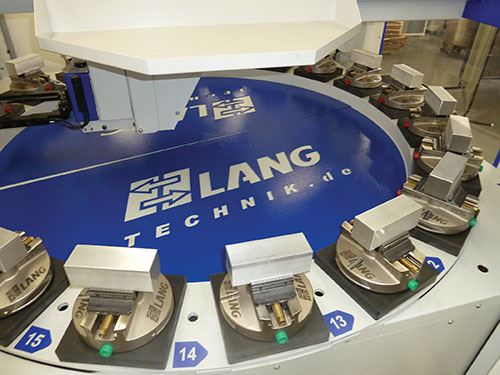
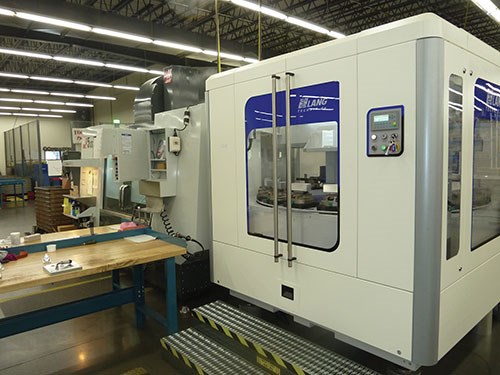
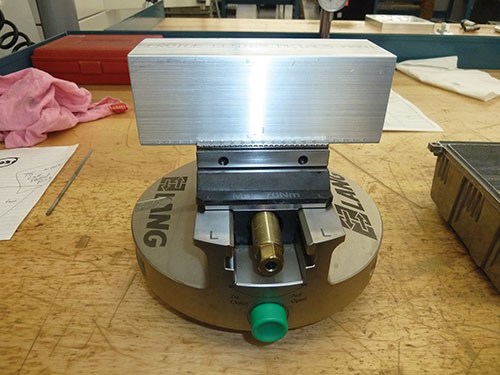
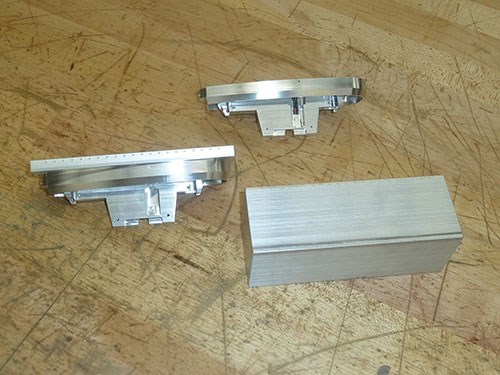
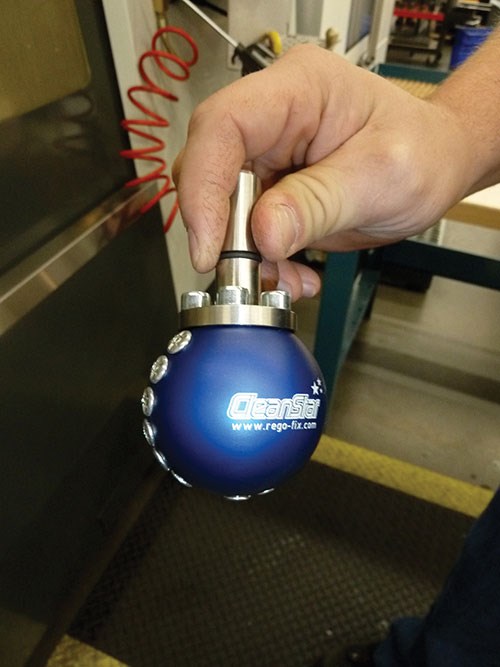
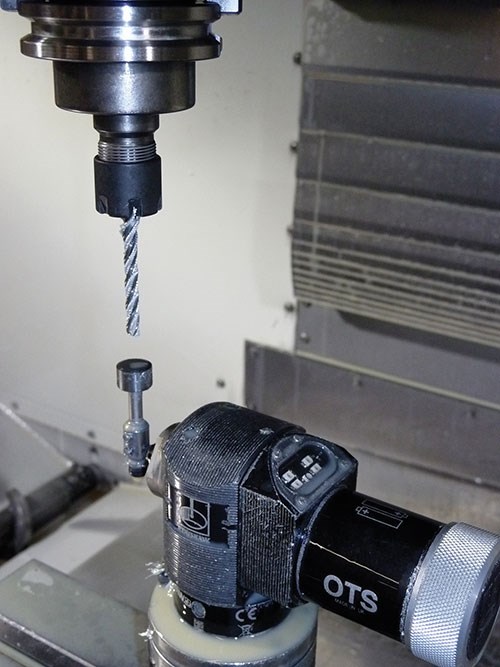
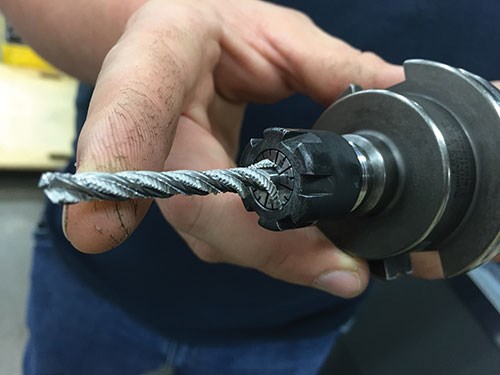





















.jpg;maxWidth=300;quality=90)








